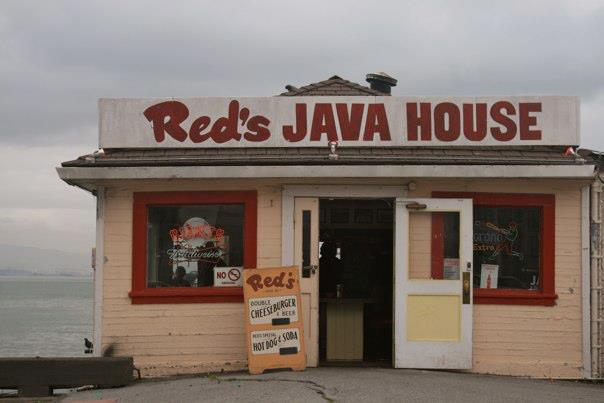






























































Red’s Java House, San Francisco waterfront. Photo: Jeffrey St. Clair
There is a simple problem professors sometimes challenge their intermediate econ students with on the first day of class. Popular restaurants often have long waits for tables, especially on weekend nights. Why don’t the restaurants just raise their prices?
These econ students all know that when the demand exceeds supply, the price is supposed to rise until the two are in balance. This should mean that the restaurants can just announce to the people standing in line that the menu prices have just gone up by 50 percent.
If they still have a long line, they can announce they have doubled the price. And they can keep going until the line has been eliminated.
This is a pretty surefire way to eliminate the line. It would also almost certainly mean a large increase in profits for the night. But it’s also something almost no restaurant would ever do.
The reason is simple: there is probably no better way to antagonize customers than to play this sort of price-gouging game. People who made plans long in advance may decide to suck up the higher prices and stay for the meal, but odds are they will not be coming back again any time soon.
And they are likely to have bad things to say about the restaurant to their friends, neighbors, and co-workers. The same is true for all the people in line who were chased away by the prospect of paying 50 percent more or twice the normal price for their meal.
This sort of exercise in price-gouging is likely to not only be effective in eliminating the line on the night it is used. A restaurant that engaged in this sort of behavior would likely soon not have to worry about large numbers of people lining up to get dinner on any night.
Donald Trump obviously never took an econ class with a professor who gave him this quiz. If he had, he would not be looking to play his silly tariffs games. The price-gouging restaurant is actually a very good analogy.
We have developed relationships with our trading partners over recent decades that have been mutually beneficial. The concept of a business relationship being mutually beneficial is apparently difficult for Donald Trump to understand, but it actually describes most exchanges.
People benefit from buying the items they purchase from stores or online platforms, and the sellers generally make a profit on the sales. We all might prefer to pay less, but we are almost by definition better off making the purchase than not making it, otherwise why did we do it?
The same story applies to trade between countries. We benefit from being able to import items from our trading partners. We would have to pay more money if we produced it here, or in some cases we would have to go without the imported items altogether. (We don’t grow many bananas in the United States.) And the exporters benefit by selling us goods at a profit.
This doesn’t mean we can never benefit by altering trade relations, for example with a well-planned industrial policy, as President Biden sought to do by promoting the domestic manufacturing of advanced semiconductors, electric vehicles, and clean energy. But if anyone can find evidence of a coherent industrial policy in Trump’s tariffs, they are taking stronger drugs than Elon Musk.
All this is straightforward and simple. The question is what Trump hopes to accomplish by slapping big import taxes on most of the items we buy from our trading partners? In the short term, we can probably expect some countries to make some concessions to limit Trump’s tariffs since they do benefit from current patterns of trade, just as we do.
However, we should expect that Japan, Korea, and all the other countries will work vigilantly to reduce their dependence on trade with a country whose leader does not care at all about trade agreements or even his own prior commitments. The United States under Trump is absolutely not a reliable trading partner. Trump makes it a principle that he gets to do whatever he wants whenever he wants.
The best way to understand Trump’s tariffs is as the restaurant owner jacking up prices to get the most money possible out of the people waiting in line. This price gouging will likely increase profits for a few days, until customers get sick of the trick and people stop coming to the restaurant.
It will be the same story with Trump’s tariffs. We may see some commitments for increased purchases of U.S. made planes or U.S. grown food, but these benefits will be short-lived and likely outweighed by the higher prices we pay for imports.
And longer term, as Trump makes us a pariah country, we will pay a big price as no one will want to trade with us, unless there is no way to avoid it. We are already seeing this with foreign tourism, which is going through the floor. Trump apparently wants to do the same to the rest of our trade.
This first appeared on Dean Baker’s Beat the Press blog.
The post Trump’s Tariffs and Price Gouging Restaurants appeared first on CounterPunch.org.
This post was originally published on CounterPunch.org.